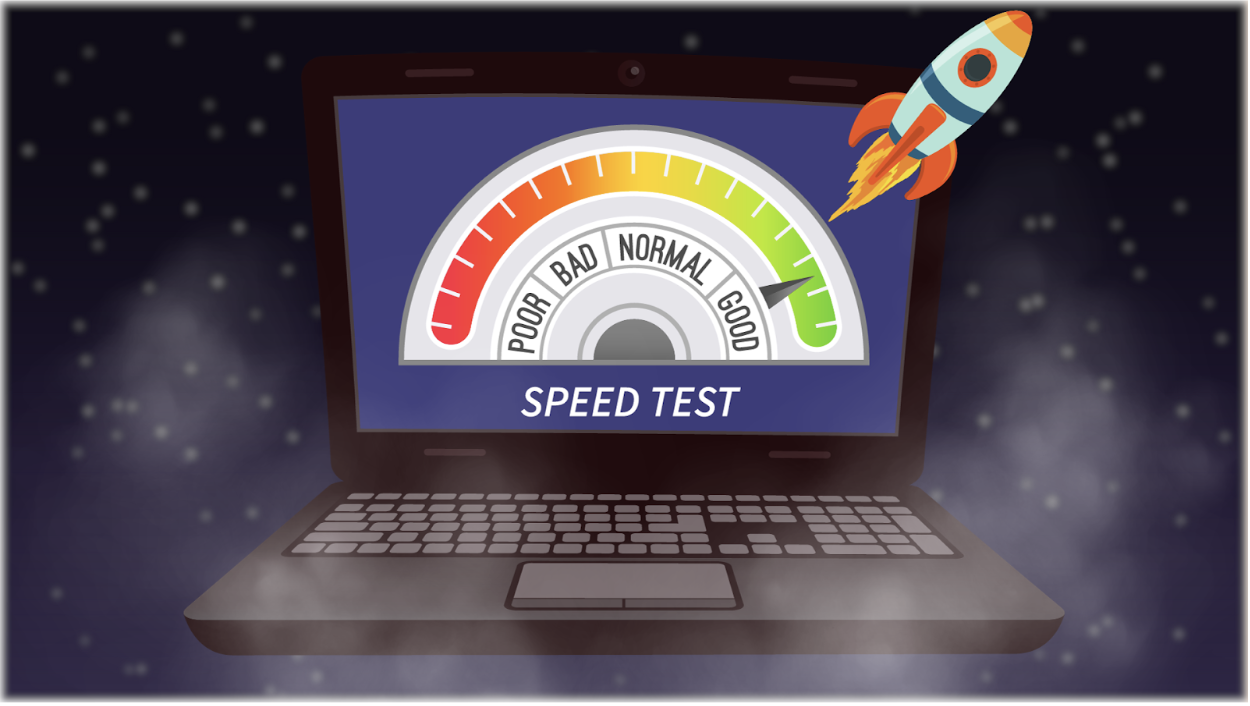One of the primary causes of slow website loading times is large, unoptimized images. Slow websites negatively affect the user experience, and hence, avoiding this issue is crucial. Not only that, but faster loading times can also significantly improve search engine rankings.
Optimizing images reduces bandwidth usage, lowers hosting costs, and improves site performance for users with limited internet speed. Image optimization can involve various techniques, such as compression, resizing, and using the right file format.
Another technique is to use free images CDN to increase site speed. Free image CDNs distribute and cache images across global servers. This image CDN free delivery of images reduces latency when users access a website. In this article, you will be able to learn a lot about free image CDNs and their importance.
Comparison of traditional image hosting vs. free image CDNs
Loading speed and latency
Traditional image hosting typically relies on a single server. This can lead to higher latency, especially for users far from the server’s location. Free image CDNs reduce this latency because they cache images on multiple servers globally. This ensures faster image loading times, regardless of the user’s location.
CDNs often use edge servers closest to the user. This minimizes the distance data travels between the server and the user. This process overall speeds up image delivery compared to traditional hosting.
Scalability and performance optimization
Traditional image hosting can struggle with scalability. You will have to manually scale by adding servers yourself. This might not be timely or cost-effective for growing websites. Free image CDNs automatically adjust to traffic spikes and scale to accommodate increased demand. This provides consistent performance without manual intervention.
CDNs often come with built-in optimization tools like image compression and format conversion. These kinds of features are not always available with traditional hosting.
Reliability and redundancy
Traditional image hosting is often limited by the reliability of a single server. If the server goes down, images won’t load, affecting website availability. On the other hand, free image CDNs provide redundancy. They store copies of images on multiple servers, so if one server fails, another can take over. This ensures continuous availability.
The distributed nature of CDNs protects against DDoS attacks and server failures more effectively than traditional single-server hosting solutions. Free CDNs can also offer better data backup and recovery solutions compared to traditional hosting as well.
The role of free image CDNs in website performance
In this section, let’s discuss how image CDNs work.
Free image CDNs store copies of images on multiple servers distributed globally. When a user requests an image, image CDNs intercept those requests and deliver the images to the user from their network. Thus, the images are served to the user from the server closest to them.
Image CDNs also use other methods to optimize the speed of delivering images to users. These include
- Compressing images
- Converting them to efficient formats like WebP
- Managing load balancing
- Intelligently routing user requests to the most suitable server
Benefits of using free image CDNs for website performance
There are multiple benefits to using Image CDN. those are
Improved site speed – By serving images from the nearest server to the user, image CDNs significantly reduce the load time of images. Moreover, by using efficient caching policies, CDNs ensure that images are stored in the user’s browser. This reduces the load time for repeat visits.
Enhanced user experience – When pictures load faster, using the internet becomes easier and quicker. CDNs, which we talked about before, also make pictures look good without taking too long to load. This means you get to see nice pictures without waiting for a long time. Also, the reliability of CDNs ensures that images are always available. This increases the integrity of the website’s design.
SEO benefits – Faster site speeds and reduced load times are key factors in improving a website’s search engine ranking. Enhanced user experience metrics like lower bounce rates and longer session durations positively influence SEO. As a result, Google and other search engines favor websites with optimized content delivery, such as those using CDNs.
What should you look for in a free image CDN solution?
There are many factors to consider when you are looking for a free CDN. In this article, we will discuss three important considerations.
Global CDN network
A wide global reach is essential for any CDN. Usually, free CDN has a relatively lower number of servers compared to premium CDN services. Make sure your free CDN has servers in various geographical locations to reduce latency for users worldwide.
The more distributed the network, the better the load balancing. This helps in efficiently managing traffic spikes and high-load situations. A global network also means better failover capabilities because, even if the servers in one country are down, the CDN network can deliver images from servers in another country.
Automatic image optimization
Making pictures smaller without losing much quality is important. It helps websites load faster and uses less internet data. Look for a CDN that supports modern image formats, like WebP. Formats like WebP provide superior compression and quality characteristics compared to traditional formats.
Also, your free CDN should be able to dynamically resize images based on the user’s device. This is important to optimize images for both mobile and desktop viewing. Moreover, a good image CDN should offer options like lazy loading. In lazy loading, images are loaded only as they come into the browser’s viewport. This improves both the loading time and the user experience.
Easy integration and documentation
At the end of the day, you should be able to easily use the free CDN you choose. There is no point in using a free CDN if you have to bear a huge cost to integrate it into your application. The CDN should offer straightforward integration with your existing tech stack.
Pick a helpful service that has easy-to-follow instructions for your developers. They should be able to learn how to use the CDN by following step-by-step guides. It’s a good idea to choose a free CDN that works well with popular systems like WordPress. Also, look for one that has friendly customer support and a community forum where people share ideas and help each other.
Top free image CDN solution
Filestack
Filestack is a comprehensive set of tools and APIs designed for uploading, transforming, and delivering files efficiently. CDN service is part of Filestack File Uploader and File Upload API. By using this file uploader’s free plan, you also get access to its CDN for free.
Key Features
- Filestack CDN has a vast network of servers across the world.
- The CDN caches Filestack URLs the first time they are accessed and keeps the cached copy for 30 days.
- It offers a base URL for all assets on its CDN for simplified access.
- Provides an adaptive library for responsive image delivery based on browser capabilities.
You can use Filestack CDN by integrating the Filestack File Uploader into your website. To do this, sign up for a Filestack account and obtain an API key. Then, choose SDKs for your preferred programming language. Next, initialize the Filestack client in your application using the API key. Finally, use Filestack’s functions to upload content to the CDN. This will automatically distribute your website’s images across servers.
AWS CloudFront
AWS CloudFront is a CDN service that integrates with other AWS services, such as S3 and EC2. The service offers a free tier for small-scale or start-up projects. It provides a global network of edge locations to ensure low latency and high throughput for the delivery of photos.
Key Features
- CloudFront provides access control capabilities, including signed URLs and Geo-restriction
- The service includes CloudFront Functions for edge computing and Lambda@Edge for serverless computing operations
- Protection against network and application layer attacks
- integration with AWS Shield and AWS WAF for enhanced security
To use Cloudfront, sign up for an AWS account. Then create a CloudFront distribution by choosing an origin, like an S3 bucket or an HTTP server. Next Configure distribution settings, such as default cache behavior, SSL certificates, and access control.
Fastly
Fastly offers a free Image CDN plan designed to optimize and deliver images and videos faster. Fastly’s free image CDN is ideal for small to medium-sized websites looking to improve their image loading times without incurring high costs.
Key Features
- Automatically adjusts image quality and format based on the end-user’s device and browser.
- Provides on-the-fly image resizing, cropping, and format conversion without the need for pre-processing.
- Employs sophisticated caching strategies to reduce load times and bandwidth usage.
To use Fastly, start by creating a free account on Fastly’s website. Then, set up a new service in your Fastly account and specify your website’s domain and other relevant settings.
Why should you select Filestack over other solutions?
Filestack has become one of the most popular tools among customers in recent times. It’s not just a “free images CDN”. It also provides a very easy-to-use file uploader. It offers a wide range of features, including uploading, transforming, and delivering content. This tool offers a highly intuitive and user-friendly interface, targeting both developers and non-technical users. Moreover, the infrastructure of Filestack is designed to handle large volumes of traffic. Therefore, your website can grow with your business needs without sacrificing performance. In addition to file uploading services, it also offers image hosting API, embedded photo editing, and OCR APIs.
Do you want to try out Filestack? Sign up for free
FAQs
1. Does free CDN increase website speed?
Yes, a free CDN increases website speed by caching content closer to users, reducing latency and load times.
2. How do you optimize a website for performance and speed?
Optimize website speed by compressing images, minimizing HTML, CSS, and JS code, using a content delivery network, and optimizing server response time.
3. How do I optimize my website for image speed?
To optimize image speed, compress and resize images, use modern formats like WebP, and deliver them through a CDN.
4. What is CDN web performance?
CDN web performance refers to the improved speed and efficiency in content delivery to users globally achieved using a distributed server network.
Shanika Wickramasinghe is a software engineer by profession and a graduate in Computer Science. Her specialties are Web and Mobile Development. Shanika considers writing the best medium to learn and share her knowledge. She is passionate about everything she does, loves to travel, and enjoys nature whenever she takes a break from her busy work schedule.
Read More →



